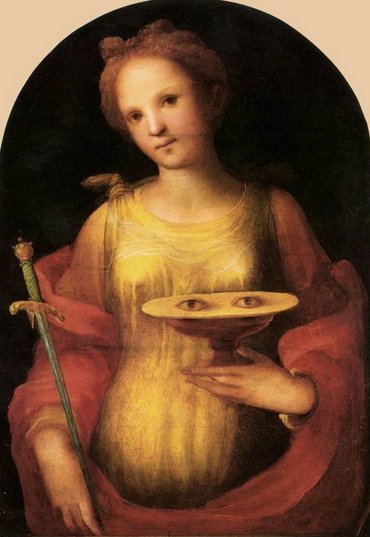The beginning of Water (Sea) was
determined by Nunki:
... This [σ
Sagittarii] has been
identified with Nunki of
the Euphratean Tablet of the
Thirty Stars, the Star of
the Proclamation of the Sea,
this Sea being the
quarter occupied by Aquarius,
Capricornus, Delphinus, Pisces,
and Pisces Australis. It is the
same space in the sky that
Aratos designated as Water
...
|
36 |
|
OCT 21 (*214) |
9 |
31 (*224) |
25 |
|
 |
 |
|
*278 |
NUNKI
(*288.4) |
|
X-MAS EVE |
Jan 3 (368) |
|
3 |
23 |
|
NOV 26 |
27 |
28 (355 - 23) |
3
|
DEC 2 |
18
|
SOLSTICE |
|
 |
 |
 |
 |
 |
|
*314 |
*315 |
*316 |
*320 |
*339 |
|
Jan 29 |
30 |
31 (396) |
Febr 4 |
Terminalia |

.jpg)
... I wan't a clean cup, interrupted the Hatter:
let's all move one place on. He moved as he
spoke, and the Dormouse followed him: the March
Hare moved into the Dormouse's place, and Alice
rather unwillingly took the place of the March
Hare. The Hatter was the only one who got any
advantage from the change; and Alice was a good
deal worse off than before, as the March Hare
had just upset the milk-jug into his plate
...
Reasonably enough we can indeed see the Head
(the beginning) of the Green Serpent at the
South Dipper.

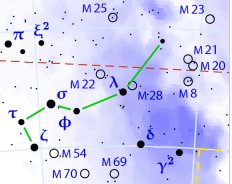
The (Milky Way) River - spilled out by the March
Hare - had just been crossed over. The Toad and the
Rabbit had stolen the fire from the Jaguar and
taken it across.
... the pre-Columbian
Toadstool-god Tlalóc, represented as a toad with
a serpent head-dress, has for thousands of years
presided at the communal eating of the
hallucigenic toadstool psylocybe; a feast
that gives visions of transcendental beauty.
Tlalóc's European counterpart, Dionysus, shares
too many of his mythical attributes for
coincidence; they must be versions of the same
deity ... I suggest that a secret Dionysiac
mushroom cult was borrowed from the native
Pelasgians by the Achaeans of Argos. Dionysius's
Centaurs, Satyrs, and Maenads, it seems,
ritually ate a spotted toadstool called 'flycap'
(amanita muscaria), which gave them
enormous muscular strength, erotic power,
delirious visions, and the gift of prophecy
...

|
 |
|
1 |
Cipactli (alligator) |
11 |
Ozomatli (monkey) |
|
2 |
Ehecatl (wind) |
12 |
Malinalli (grass) |
|
3 |
Calli (house) |
13 |
Acatl (reed) |
|
4 |
Cuetzpallin (lizard) |
14 |
Ocelotl (jaguar) |
|
5 |
Coatl (serpent) |
15 |
Cuauhtli (eagle) |
|
6 |
Miquitztli (death) |
16 |
Coz-cacuauhtli
(buzzard) |
|
7 |
Mazatl (deer) |
17 |
Ollin (movement) |
|
8 |
Tochtli (rabbit) |
18 |
Tecpatl (flint knife) |
|
9 |
Atl (water) |
19 |
Quiahuitl (rain) |
|
10 |
Itzcuintli (dog) |
20 |
Xochitl (flower) |
|
... The Moon
rabbit in folklore is a rabbit
that lives on the moon ... The story
exists in many cultures,
particularly in Aztec mythology and
East Asian folklore, where it is
seen pounding in a mortar and
pestle.
In Chinese folklore, it is often
portrayed as a companion of the moon
goddess Chang'e, constantly
pounding the elixir of life for her;
but in Japanese and Korean versions,
it is just pounding the ingredients
for rice cake ...
 |
From then on the Jaguar went
hunting only in the night, because his new eyes
were watery.
...
Originally the highly born
family of the Sun, Moon, and stars dwelt in a
cave on the summit of Maunga-nui, Great
Mountain, in the ancient homeland. They were not
at all comfortable in their gloomy home for they
could not see distinctly and their eyes watered
constantly ...
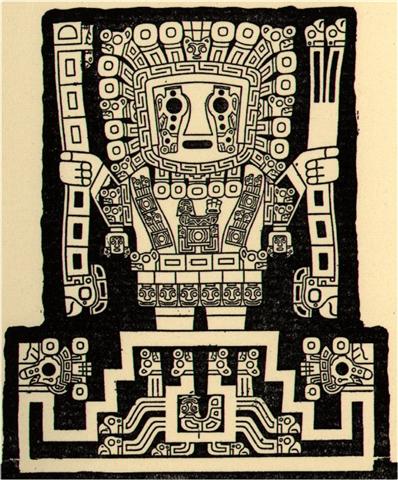

The position of Nunki in the night sky was
*288.4 right ascension days after 0h. When the
Pope Gregory XIII launched his new calendar
the day had been chosen to be number 288 (= 2 *
144 = 4 * 72 = 8 * 36 = 16 * 18 = 9 * 32 = 3 *
96) counted from the
beginning of the year. Numbers (i.e. the stars)
ruled.
... Gregory dropped 10 days
to bring the calendar back into synchronisation
with the seasons. Accordingly, when the new
calendar was put in use, the error accumulated
in the 13 centuries since the Council of Nicaea
was corrected by a deletion of ten days. The
Julian calendar day Thursday, 4 October 1582 was
followed by the first day of the Gregorian
calendar, Friday, 15 October 1582 (the cycle of
weekdays was not affected)
...
... The Gregorian calendar was launched by the
Pope Gregory XIII in AD 1582 and its date ºJune
30 corresponded to the place not only of
heliacal Sirius but also to day when the Button
star
ξ
in Gemini rose with the Sun. Furthermore, half a
year away was Nunki and the Teapot
...
The Sumerians had led the way and the remarkable
variable star η Carinae (*162) was half a
year away from March 1.
| ST JOHN'S DAY |
JUNE 25 (181 - 5) |
26 (177) |
27 |
 |
 |
 |
 |
 |
| Ga4-12 (175 = 350 / 2) |
Ga4-13 → 14 * 29½ |
Ga4-14 → Bharani |
Ga4-15 → 4 * 15 = 60 |
| p Carinae (159.3) |
φ Hydrae (160.3) |
no star listed (161) |
VATHORZ POSTERIOR = θ Carinae (162.1), PEREGRINI = μ Velorum, η Carinae (162.6) |
|
... This [η Carinae] is one of the most noted objects in the heavens, perhaps even so in almost prehistoric times, for Babylonian inscriptions seem to refer to a star noticeable from occasional faintness in its light, that Jensen thinks was η. And he claims it as one of the temple stars associated with Ea, or Ia, of Eridhu¹, the Lord of Waters, otherwise known as Oannes², the mysterious human fish and greatest god of the kingdom.
¹ Eridhu, or Eri-duga, the Holy City, Nunki, or Nunpe, one of the oldest cities in the world, even in ancient Babylonia, was that kingdom's flourishing port on the Persian Gulf, but, by the encroachment of the delta, its site is now one hundred miles inland. In its vicinity the Babylonians located their sacred Tree of Life.
² Berōssōs described Oannes as the teacher of early man in all knowledge; and in mythology he was even the creator of man and the father of Tammuz and Ishtar, themselves associated with other stars and sky figures. Jensen thinks Oannes connected with the stars of Capricorn; Lockyer finds his counterpart in the god Chnemu of Southern Egypt; and some have regarded him as the prototype of Noah ...
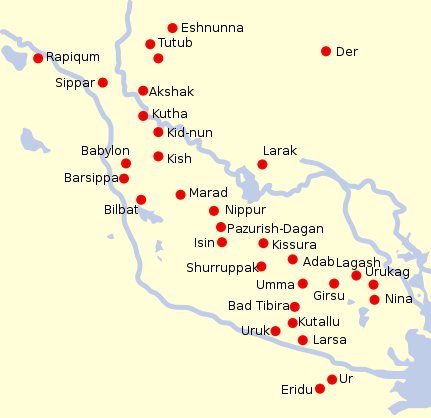
|
| Aug 27 |
28 (240) |
29 (*161) |
30 |
| °Aug 23 |
24 (236 = 8 * 29½) |
25 (*157) |
26 |
| 'July 31 |
'Aug 1 |
2 (214) |
3 (*500) |
| "July 17 |
18 |
19 (200) |
20 (*121) |
|
... They went on and came to Tama. They looked around and said, 'This is Tama.' They gave the name 'Tama, an evil fish (he ika kino), a very long nose (He ihu roroa).' Again they went on and came to One Tea. They saw it, looked around, and gave the name 'One Tea A Hau Maka'. Then they went on and came to Hanga Takaure. There they gave the name 'Hanga Takaure A Hau Maka'. They made camp and rested at the Bay of Flies for a week (etahi pohitu). On the eighteenth day of the month of July ('Anakena'), they went on from Hanga Takaure. [E:23] 
|
| NAKSHATRA DATES: |
| CHRISTMAS EVE |
DEC 25 |
26 (360) |
27 (19 * 19) |
| η Aquarii (342.1), σ Gruis (342.4), SITULA (Water-jar) = κ Aquarii (342.7)
*301.0 = *342.4 - *41.4 |
ε Piscis Austrini (343.5), ο Pegasi, β Gruis (343.8) |
ρ Gruis (344.0), MATAR (Rain) = η Pegasi (344.2), η Gruis (344.6), β Oct. (344.7) |
λ Pegasi (345.0), ξ Pegasi (345.1), ε Gruis (345.3), τ Aquarii (345.7), ξ Oct. (345.8), μ Pegasi (345.9) |
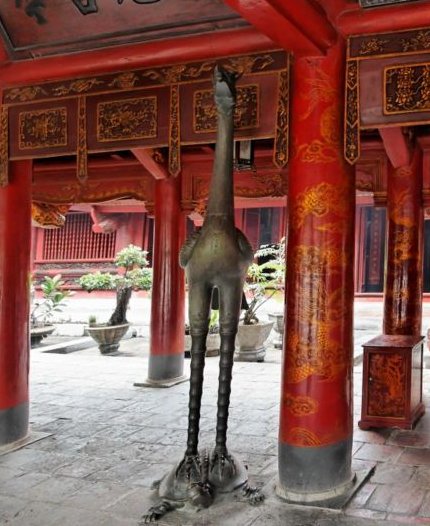 ... Horapollo, the grammarian of Alexandria, about AD 400, tells us that the crane was the symbol of a star-observer in Egypt ... Grus has as an alternative name Flamingo (a name which sounds quite similar to that of the bird Phoenix) which obviously is based on 'flame'. Phoenicopterus (the Flamingo) is characterized by its red feathers. Wikipedia: ... from Greek φοινικόπτερος meaning 'purple wing'. Purple is the colour for kings and 'phoenix' should therefore mean 'purple, the colour of the king' ... |
| Febr 26 |
27 (58 = 2 * 29) |
28 (424) |
March 1 (*345) |
| °Febr 22 |
23 |
24 (55) |
25 |
| 'Jan 30 (*315) |
31 |
'Febr 1 (32) |
2 |
| "Jan 16 (*301) |
17 |
18 (383) |
19 |
| Egyptian courtyard |
 |
Phoenician heth |
 |
Greek eta |
Η (η) |
|
... The letter shape ultimately goes back to a hieroglyph for 'courtyard' ... possibly named hasir in the Middle Bronze Age alphabets, while the name goes rather back to hayt, the name reconstructed for a letter derived from a hieroglyph for 'thread'

... The kaikai are the rythmic songs that are sung to Cat's Cradles, the string games that are found not only throughout the Pacific but throughout the world. On premissionary Rapa Nui the kaikai, together with their corresponding cat's cradles, were not simple children's games but were used, among other things, to produce magic effect. They were highly important for the study of Rapa Nui's rongorongo. This is because it was apparently with the aid of cat's cradles that the rongorongo experts taught their pupils to learn many of the chants accompanying the incised inscriptions ...
... string games could be resumed after it was clear that the Sun had managed to leave the horizon and was rapidly gaining in altitude: 'Before the sun starts to leave the horizon ... when it shows only on the horizon, ... then string games were no longer allowed as they might lacerate the sun. Once the sun had started to go higher and could be seen in its entirety, string games could be resumed, if one so wished. So the restriction on playing string games was only applicable during the period between the sun's return and its rising fully above the horizon ...
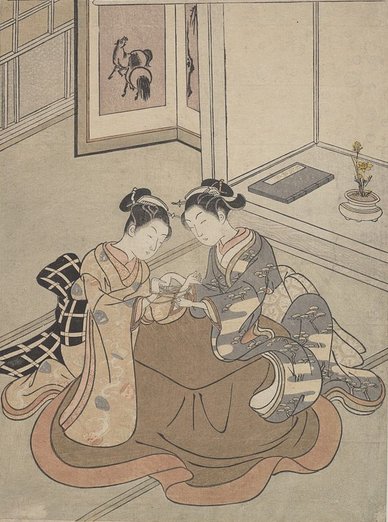
 |
|
... Berōssōs
described Oannes [St John] as the
teacher of early man in all knowledge;
and in mythology he was even the creator
of man and the father of Tammuz and
Ishtar, themselves associated with other
stars and sky figures. Jensen thinks
Oannes connected with the stars of
Capricorn; Lockyer finds his counterpart
in the god Chnemu of Southern Egypt; and
some have regarded him as the prototype
of Noah ...
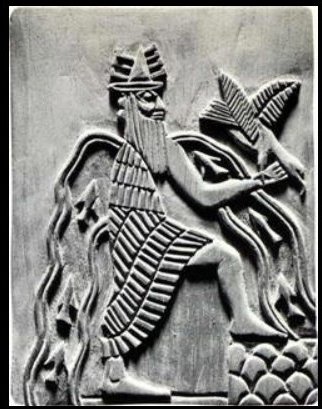
|



.jpg)




